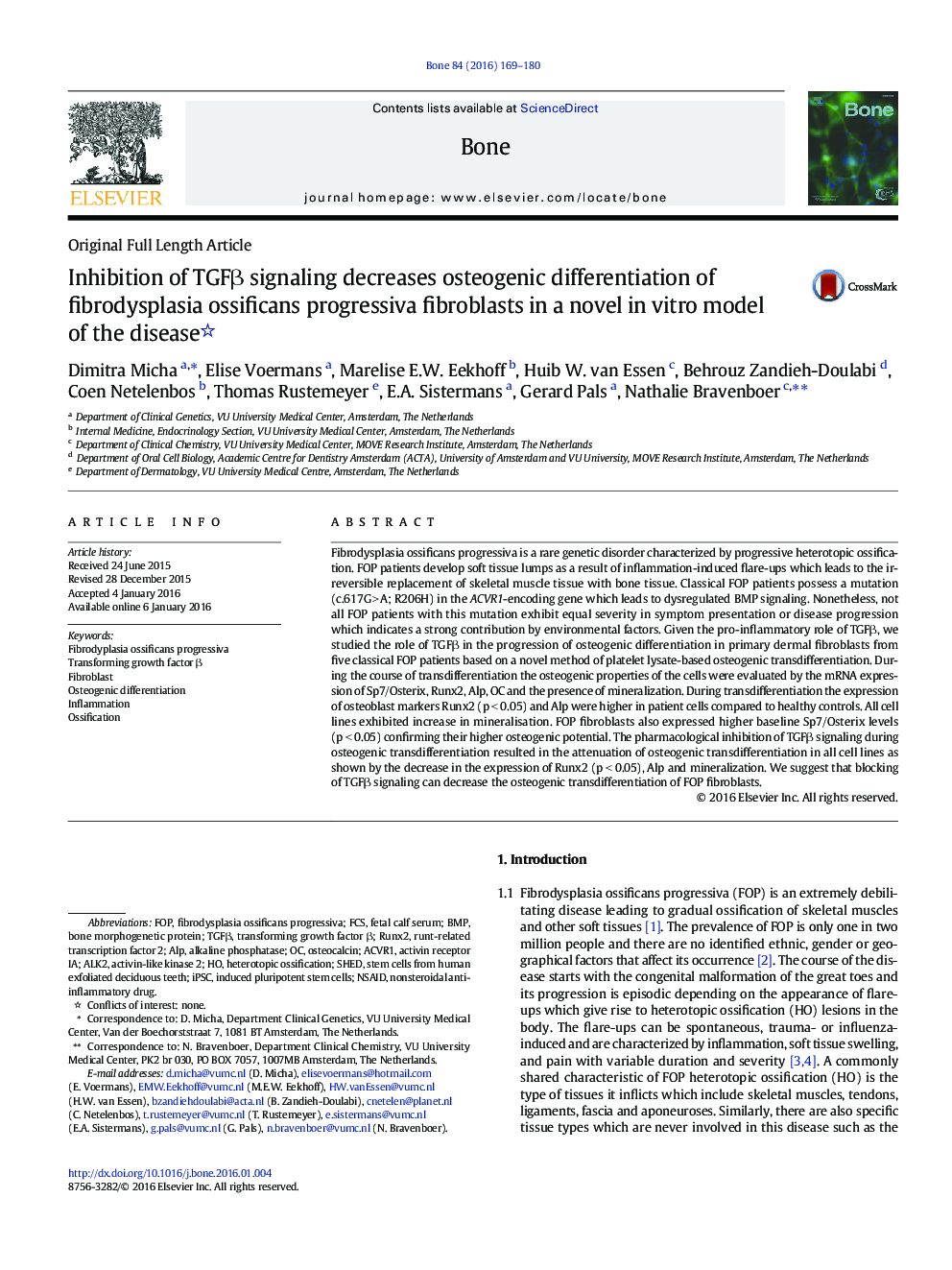| Article ID | Journal | Published Year | Pages | File Type |
|---|---|---|---|---|
| 5889426 | Bone | 2016 | 12 Pages |
â¢The risk of HO accompanying biopsy acquisition hinders the study of FOP.â¢Osteogenic transdifferentiation of fibroblasts provides an in vitro model for FOP.â¢FOP fibroblasts show higher potential for osteogenic transdifferentiation.â¢TGFβ signaling inhibition stops osteogenic transdifferentiation and mineralization.â¢TGFβ is an attractive new target for FOP treatment.
Fibrodysplasia ossificans progressiva is a rare genetic disorder characterized by progressive heterotopic ossification. FOP patients develop soft tissue lumps as a result of inflammation-induced flare-ups which leads to the irreversible replacement of skeletal muscle tissue with bone tissue. Classical FOP patients possess a mutation (c.617G > A; R206H) in the ACVR1-encoding gene which leads to dysregulated BMP signaling. Nonetheless, not all FOP patients with this mutation exhibit equal severity in symptom presentation or disease progression which indicates a strong contribution by environmental factors. Given the pro-inflammatory role of TGFβ, we studied the role of TGFβ in the progression of osteogenic differentiation in primary dermal fibroblasts from five classical FOP patients based on a novel method of platelet lysate-based osteogenic transdifferentiation. During the course of transdifferentiation the osteogenic properties of the cells were evaluated by the mRNA expression of Sp7/Osterix, Runx2, Alp, OC and the presence of mineralization. During transdifferentiation the expression of osteoblast markers Runx2 (p < 0.05) and Alp were higher in patient cells compared to healthy controls. All cell lines exhibited increase in mineralisation. FOP fibroblasts also expressed higher baseline Sp7/Osterix levels (p < 0.05) confirming their higher osteogenic potential. The pharmacological inhibition of TGFβ signaling during osteogenic transdifferentiation resulted in the attenuation of osteogenic transdifferentiation in all cell lines as shown by the decrease in the expression of Runx2 (p < 0.05), Alp and mineralization. We suggest that blocking of TGFβ signaling can decrease the osteogenic transdifferentiation of FOP fibroblasts.
